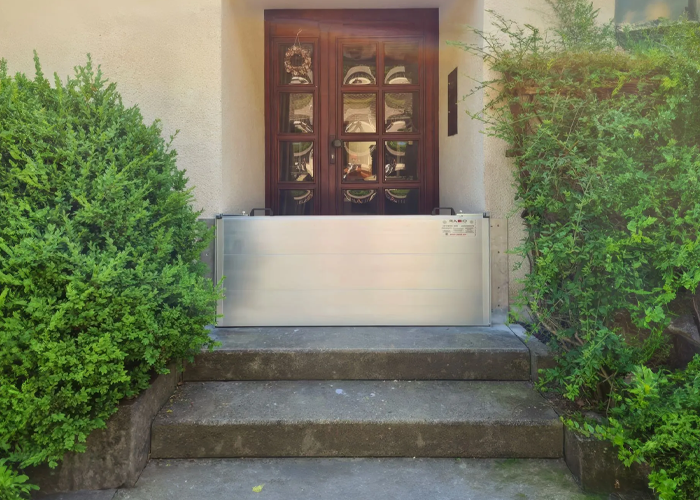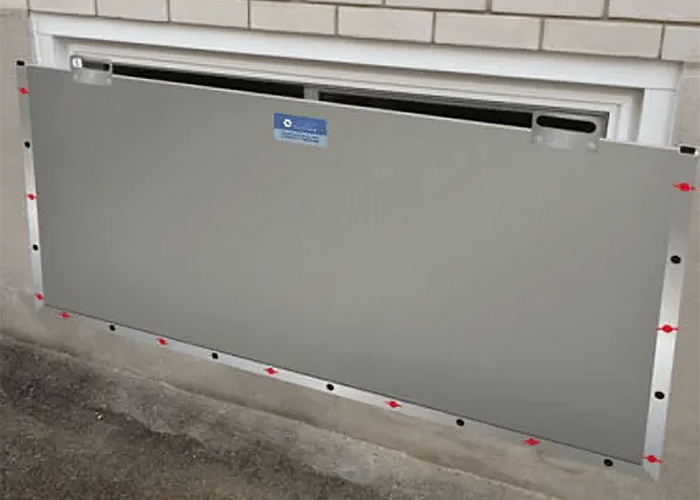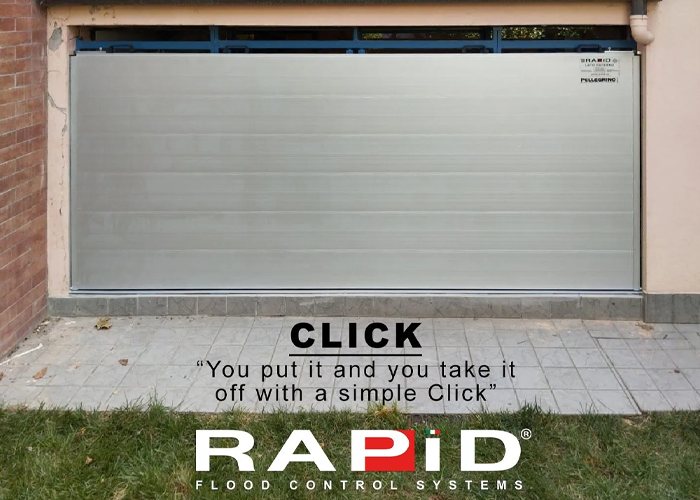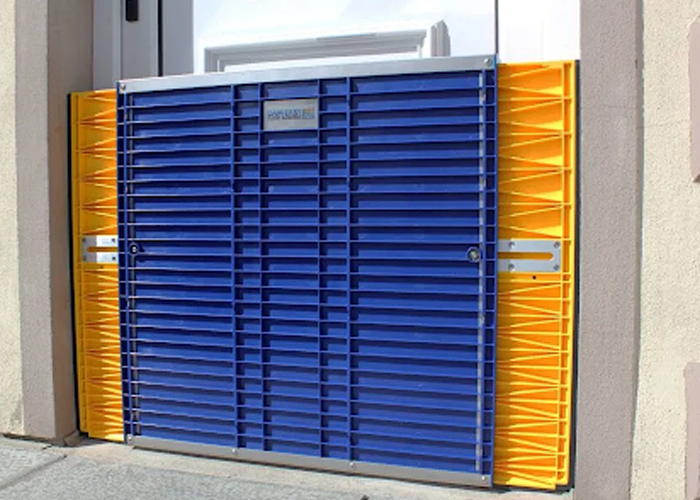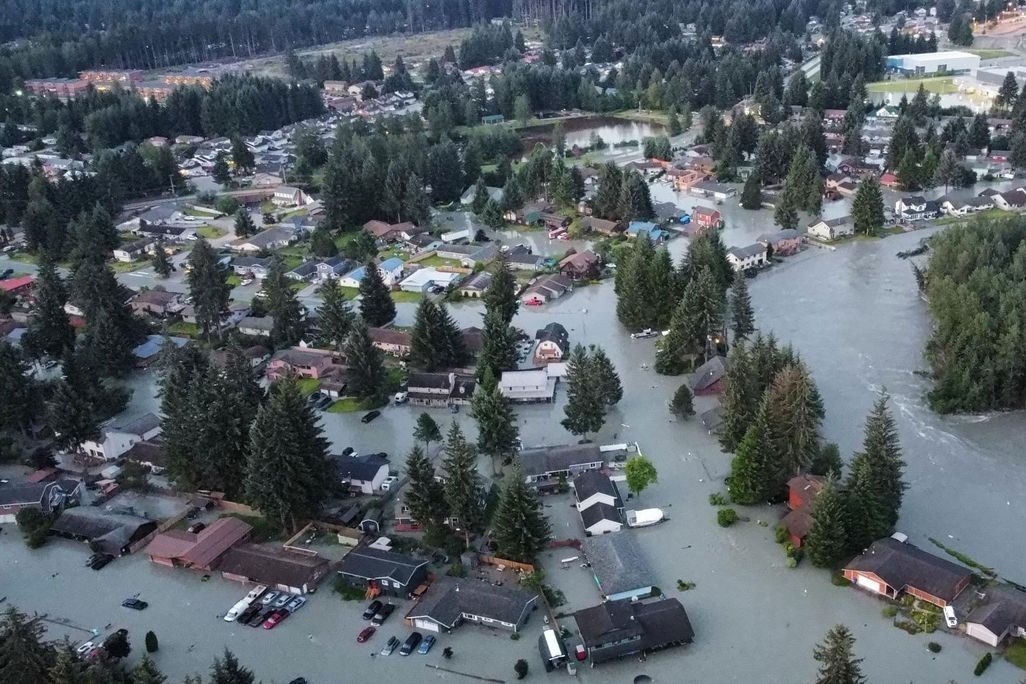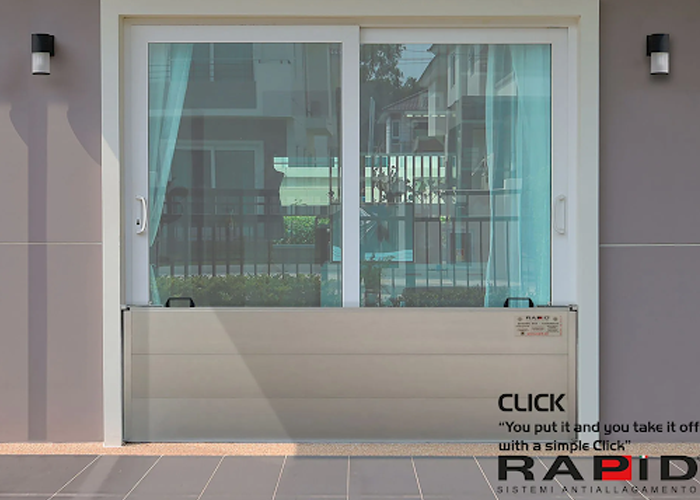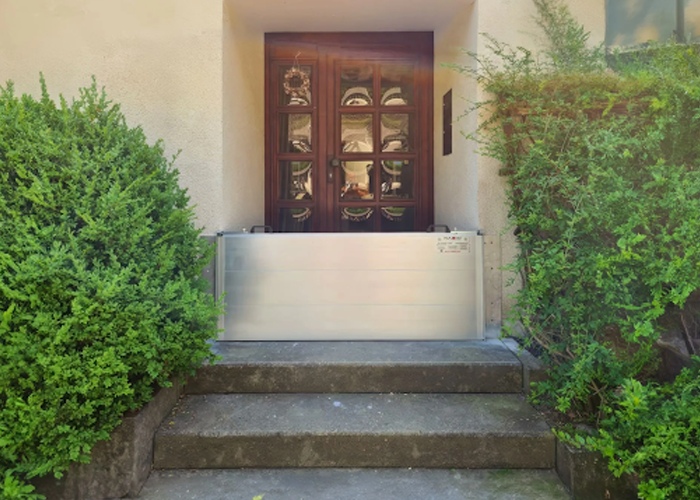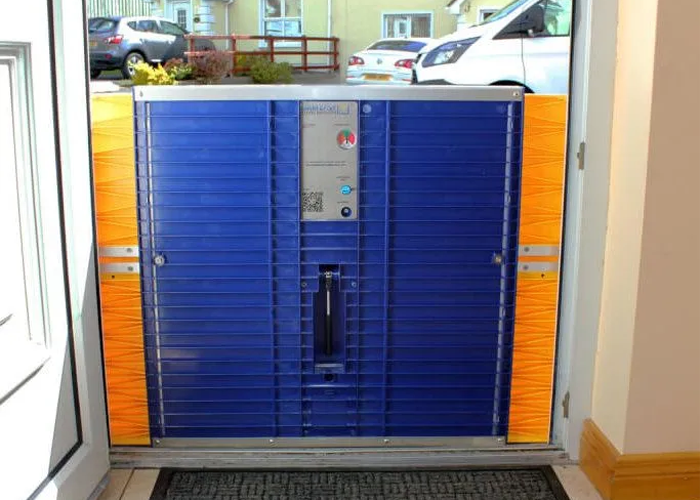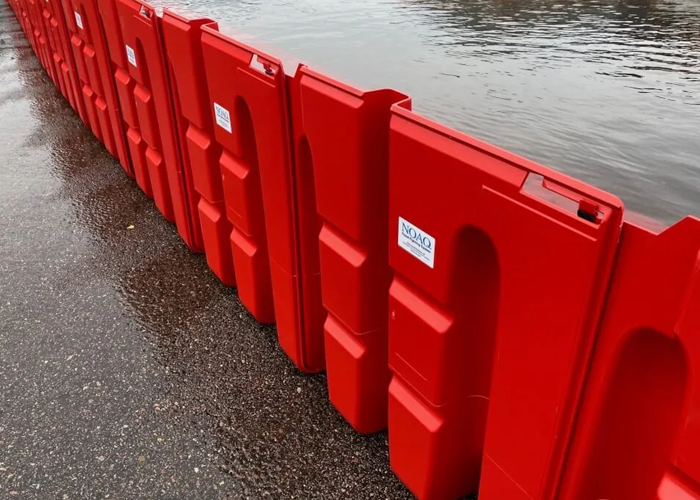Flood Defense Group supply over a mile of flood barriers in Michigan! The majority of temporary flood barriers we supply in Michigan for this flood consist of the 4’ tall Muscle Wall product. This is a water filled barrier commonly used to protect homes from flooding that we believe to be the best option on the market for a reusable barrier that is 4’ tall or higher. Muscle Wall sizes range from 2’ to 8’ in height of flood protection and this product is completely reusable while offering robust protection against high winds, frigid temperatures, and wave impact. We believe Muscle Wall to be the clear winner within the industry of flood defense products when a reusable flood barrier is required that needs to be taller than 3’, strong enough to take wave/debris impact, and comparatively inexpensive to other options on the market for an equal height of protection.
Flood Defense Group sends over a mile of flood barriers to combat flooding on Lake Michigan
As of May 2020, Lake Michigan and Lake Huron are about 3’ feet higher than average which is the highest lake level on record for these lakes. Lake levels are not expected to go down until around July and if weather patterns continue to bring in moisture, homeowners are bracing for the prospect of prolonged flooding. Added moisture or even wind driven surges of water are likely to plague the area well into 2020 leaving a continued threat of flooding or land loss due to erosion.
These conditions have created a variety of flooding problems and a requirement for flood barriers in Michigan throughout the Great Lakes Basin. Flood Defense Group is working throughout the region, helping those looking to buy flood barriers in Michigan, Wisconsin, Illinois, and further ‘downstream’ into Ohio, Pennsylvania, and New York to find a solution that works best for each scenario.
What residential flood barriers for homes or properties have been in demand around the Great Lakes?
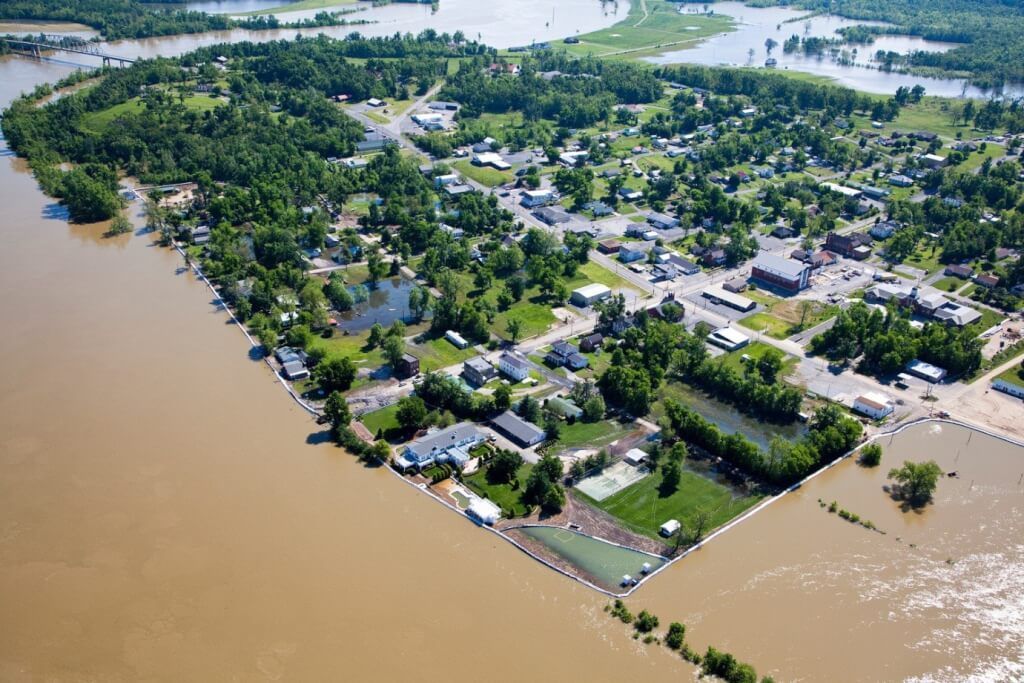
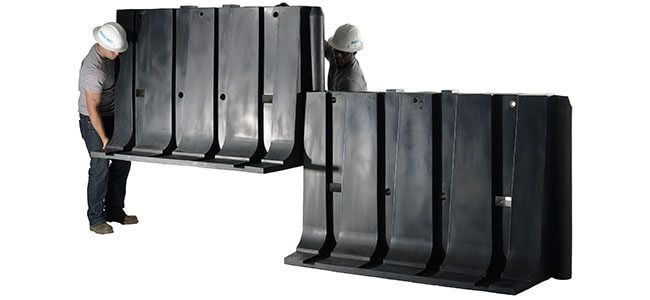
The majority of temporary flood barriers we are supplying into the area consist of the 4’ tall Muscle Wall product. This is a water filled barrier commonly used to protect homes from flooding that we believe to be the best option on the market for a reusable barrier that is 4’ tall or higher. Muscle Wall sizes range from 2’ to 8’ in height of flood protection and this product is completely reusable while offering robust protection against high winds, frigid temperatures, and wave impact. We believe Muscle Wall to be the clear winner within the industry of flood defense products when a reusable flood barrier is required that needs to be taller than 3’, strong enough to take wave/debris impact, and comparatively inexpensive to other options on the market for an equal height of protection.
For lower level flood depths, another water barrierwhich has been popular is the Water Tube. This is commonly referred to as a ‘water filled flood tube’ and great for flood depths of about 12” or less that are not experiencing significant wave impact. We believe Water Tubes to be the most economical flood prevention option on the market for a reusable flood barrier for depths of about 12” or less.
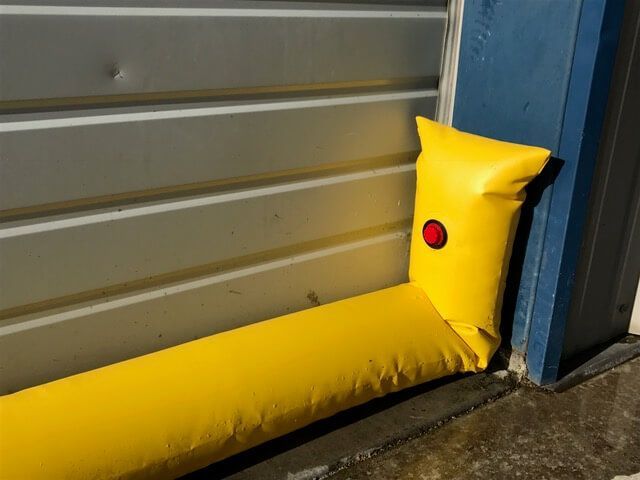
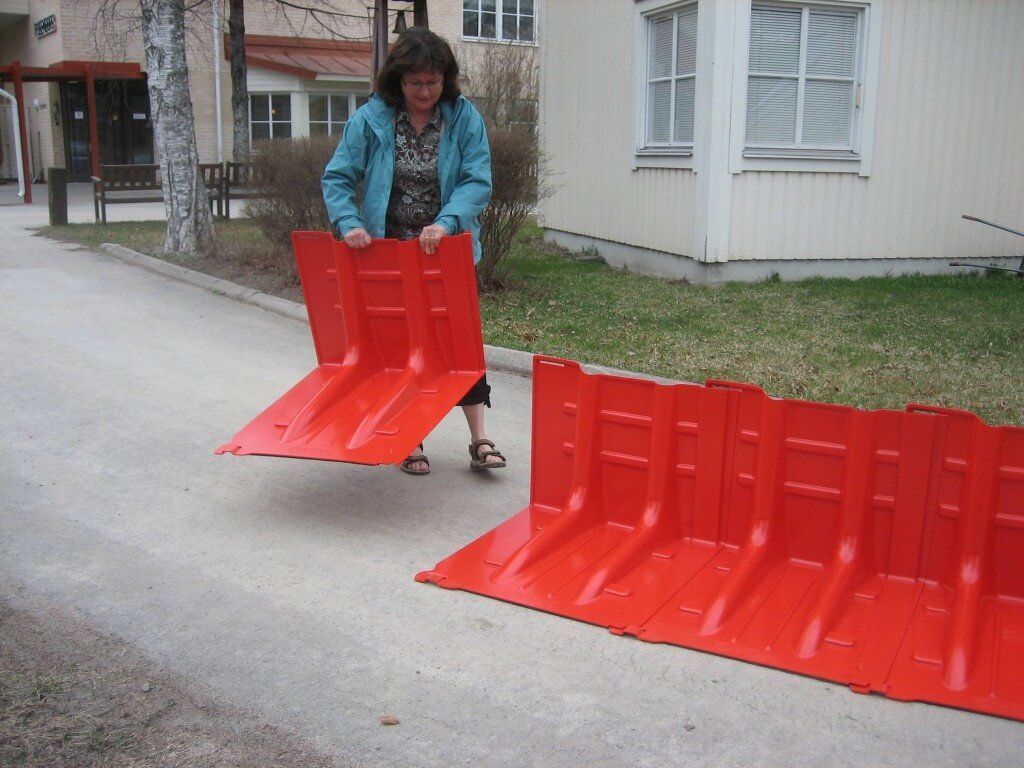
Finally, the NOAQ Boxwall flood barrier has also been an extremely popular line of flood barriers in Michigan to protect houses from flooding because it achieves 20” and 40″ in height, does not require any fill material, quick to set up and take down, and are easily stored in your garage like a stack of chairs. This combination of factors combined with the price per linear foot for height of protection achieved makes it one of our most popular flood barriers around Lake Michigan and across the USA. The NOAQ Boxwall can be purchased in the USA from Flood Defense Group directly or from our regional distributor Life Safety Technologies Special Systems LLC, Vermilion, Ohio 44089.
Here are some of the flood prevention solutions we can provide and some general feedback or ideas of what you can do if you are facing floodwater, do not have a flood barrier, and want to make an effort to protect yourself with locally available resources.
Stop Rising Lake Water
We have a variety of barriers that can achieve about any height. We have inflatable flood barriers, water filled flood barriers, soil filled options and flood defense barriers that do not require any fill material at all. Some of the main considerationsin flood barrier selection are the type of working surfaces you are building on, flood water depth, and will the barrier be exposed to wave action or debris impact. Time of deployment can sometimes be a factor but in the case around the Great Lakes, the incoming floodwater is coming slowly and not a surprise.
Stop Floodwater from Coming Out a Drain (planning consideration)

Due to the fact that lake levels are at a record high, there is a high potential that flood events can lead to floodwater backflowing out drains, sewer/irrigation pipes, and underground plumbing or culverts. We suggest that the best long-term solution is to install backflow preventers that stop this from happening. In cases where backflowing floodwater is a problem, we have Pipe Stoppers which are inflatable plugs that can be pushed into the pipe to be plugged and inflated to create a seal as required.
I have done nothing, I’m broke, flood water is coming, what do I do?
There are loads of techniques, tricks, and ideas on what can be done which are largely driven by budget and I could write a book but if I only had a few dollars in my pocket to spend…..I would spend it on plastic and Gorilla Tape and effectively wrap my house in plastic. I would also want some sandbags and ‘lawn stakes’ to ensure it is tacked to the ground.
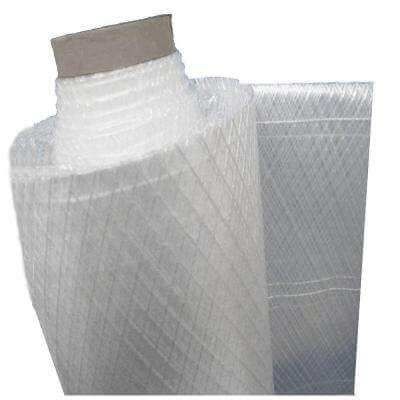
As a former infantry soldier (Go 82 nd Airborne!), I enjoy having as many lines of defense as I can between me and the potential threat. This could include any of the following:
Removable flood barriers = Line of Defense
Plastic over removable flood barriers = Line of Defense
Protect a door from flooding = Line of Defense
Stop floodwater from backflowing up a pipe = Line of Defense
Ensure gutters expel water outside your barrier = Internal Defense
Plastic Your House = Line of Defense
Sump Pump = The Alamo! The Last Line of Defense!
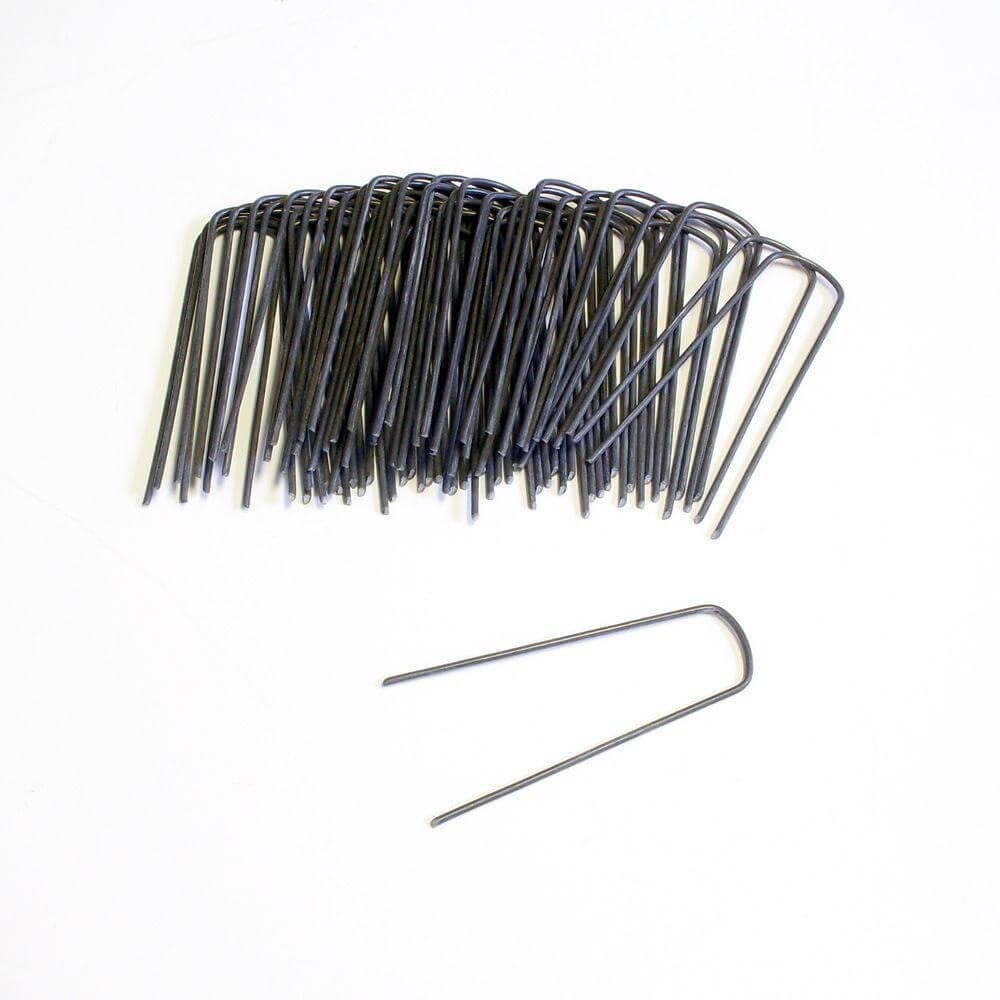
In this case, putting plastic against your house alone is a poor defense that sometimes works and is worth a shot if survival of your home depends on it but not a very good plan for the long term. Similar to the segment above titled “Mitigate Against a Rising Water Table” you can use the same plastic technique directly against the structure you are protecting which is well described as a ‘last ditch effort’.
- If you are left with this as a last option here are some ideas and tips
– Make sure the plastic rests directly against the structure higher than the height of anticipated floodwaters andall the way to the ground while making sure the plastic does not support any water weight. You then pull any/all extra plastic toward the incoming floodwater and anchor down.
– Make sure water cannot get under the plastic as it approaches the housewhen it first comes in contact with your plastic!! It must be forced on top of the plastic!
– Make sure every effort is made to seal plastic to ground when working around trees, shrubs, posts, ect… Lawn staples work great in quickly and securely stick plastic sheeting to the ground over soil and grass.
– Gorilla tape works great on dry surfaces especially if it is warmed. Flex tape appears to work great just about anywhere but will remove paint. Use tape to secure plastic to the ground and walls over concrete, wood, and other sticky surfaces to prevent water from getting under or behind the plastic sheeting. Sandbags or even scoops of shoveled dirt are also effective to keep your plastic anchored to the ground
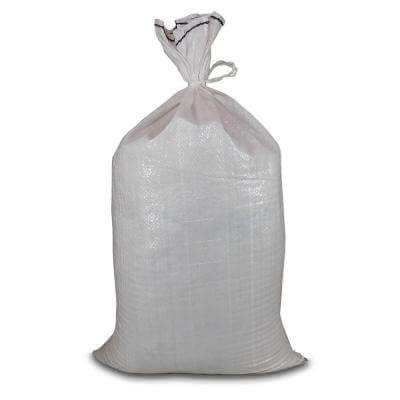
– Wooden beans like 2”x 4” planks can be used to quickly ‘scab’ or securely screw/secure plastic to a structure.
– Never put plastic UNDER a removable flood defense barrier which includes sandbags. The friction value of plastic is too low and barriers can be pushed out of place by floodwater when sitting on top of plastic
– Be aware of wind. Big sheets of plastic can easily blow out of place with wind. TRICK – If you lay out plastic, you can sometimes spray water on it to help it squish to the ground and stay in place while waiting for floodwaters to arrive.
– Is the fence surrounding your yard capable of holding plastic and floodwaters? This could be an easy extra line of defense! Plastic is comparatively cheap!!!
– If protecting windows and doorways, we have specialized panel systems like the Flood Gate by Quickdams but in an emergency, you may find that screwing a sheet of ¾ plywood over a hole to be covered with some weather stripping to create a better seal (like a gasket) and finished off with a sheet of plastic to cover it MIGHT do the trick. Tape down the edges of the plastic to always prevent water from getting between the plastic and the structure you are protecting.
– Are the downspouts of your gutters correctly removing water from the area?
– Do you have any sandbags? They sure are nice to have when needed!
– Sump pumps are cheap and a great additional line of defense! Make sure you figure out where any water would or should pool and prepare an area for your sump pump. NOTE: Water activated sump pumps are a great option for flood defenses that are not being monitored.
Covering your house with plastic is not a very good Plan A but in the absence of an alternate solution and in the face of floodwaters coupled with the desire to do something, these are actionable options or ides for the final evaluation or endorsement of the reader. At Flood Defense Group, we pride ourselves in having a fantastic line-up of the best barriers and related designs on the market when it comes to flood defense but we will take excessive amounts of time to provide feedback and ideas on how people can protect themselves from in incoming crisis even if it does not include our stock of flood barriers in Michigan. We simply enjoy helping.

Call us for a chat (208-585-1815)
A quick discussion may be time well spent in talking through your flood issues and nailing down options or ideas that work versus ones that would not be well suited for your problems. If you are looking for flood barriers in Michigan or could benefit from talking over options or ideas on how to stop floodwater at your house whether it be one of our barriers or something else entirely, we are always happy to field a phone call. We always enjoy taking a look at some pictures, and have a conversation about it as desired. Sometimes, the action of picking up the phone and talking through your flood problem goes a long way in developing actionable ideas to defend yourself from floodwaters future.
We are available to help if you are experiencing flooding or looking to buy flood barriers throughout the Great Lakes Region and the US at large. Flood Defense Group remains available to help out anybody we can.
Keith Anderson (CEO)
Flood Defense Group
keith.anderson@flooddefensegroup.com
1-208-585-1815
Mitigate Against a Rising Water Table Behind Your Barrier
Our specialty is providing removable flood barriers and we are well aware that anytime we are holding floodwater back above ground, the water is simultaneously trying to come out from below ground as well.
For example, if we are holding back 2’ of floodwater, the water table is now 2’ above the ground and the pressure of the water we are holding back is simultaneously trying to push the water through the ground under the flood barrier toward the ‘dry side’ of your barrier.
Now imagine your flood barrier is sitting on a base of soft sand while holding back 2’ of water. In most cases, it would not work. The water pressure against your barrier would pipe through the saturated sand under the barrier and well up on the ‘dry side’ causing a catastrophic failure. Using sand as an example simply illustrates/exaggerates the point of water trying to work its way through underground.
Now imagine you have a 20’ wide sheet of plastic commonly found at any hardware store which you lay out over your 2’ tall flood barrier. This will leave you about 16’ of excess plastic. By pulling this excess plastic TOWARD the incoming floodwater on the ‘wet side’ of your barrier and securing it to the ground to make sure the water gets on to of the plastic first, you will now have a 16’ long impermeable layer before the floodwater even gets to your flood barrier. In this example, the water would have to travel 16’ through the ground under the impermeable plastic layer and then under your flood barrier before it surfaces on the ‘dry side’. This technique significantly lessens the ability of the floodwater we are holding back to travel under your barrier and get onto the dry side of your protective line.

If we are building on soft or porous surfaces like sand, this is the technique we use which is detailed at the video on the bottom right of the following web-page:
https://www.flooddefensegroup.com/noaq-boxwall/
NOTE: Water can pipe through the ground over significant distances and in some cases where water is coming through the ground and into the stricture, plastic sheeting may not make a huge difference. However, it is our experience that this technique makes a huge difference in preventing water from seeping under a removable flood barrier when working on soft and porous surfaces and therefore, could have broader protective capabilities.
NOTE: This is an ‘ad-hoc’ solution in using plastic sheeting to mitigate against ground seepage specific to a flood barrier whereas concrete walls, steel sheet piles, and/or levee systems are common solutions for long term protection for critical infrastructure
Flood Defense Landscaping
In most cases, people dealing with flood problems would rather purchase, deploy, and store as few barriers as possible to get the job done. However, if you require hundreds or thousands of feet of linear flood protection, it can be quite an expensive or a time-consuming task to deploy every time it looks like it may flood. We completely understand this!
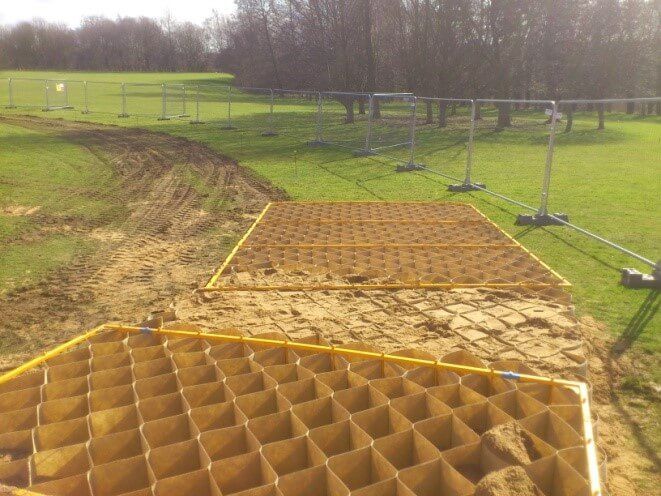
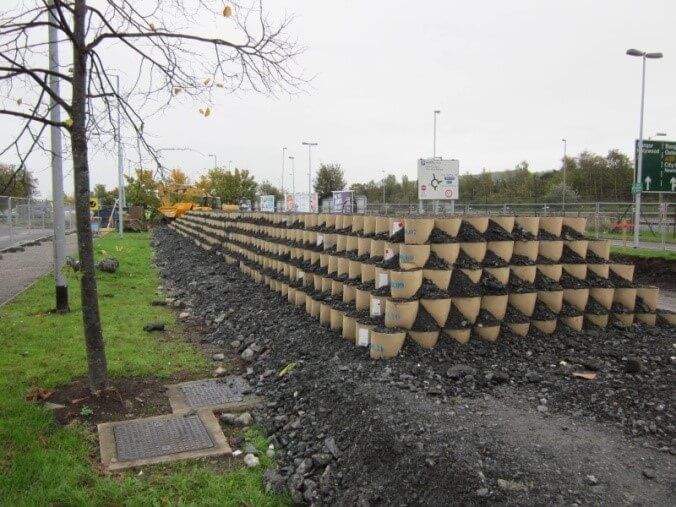
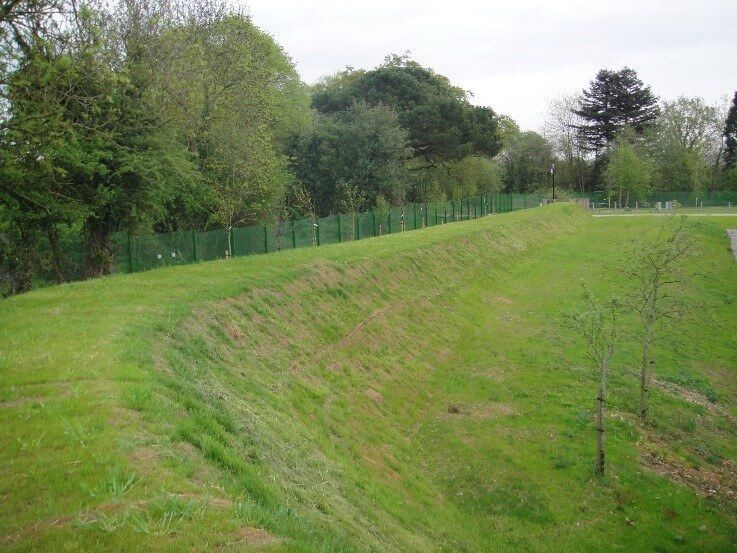
Depending on current water levels, it may not be too late to do some flood defense landscaping which can be used as long term flood defenses that tie into temporary/removable flood defense barriers as a greater part of a flood defense plan. Whether it be a raised flower bed, a concrete wall, or a low profile berm of grass, this technique can save time and money for anybody bracing themselves for long term and repeat flood problems.
Flood Defense Landscaping can be done in a huge variety of ways and for our operations, we use the soil filled Defencell product. This product is an effective flood barrier by itself but the long-term use capabilities, simplicity of use, and low expense create a great combination of factors within our flood defense solution line-up. We enjoy the ability to stack this barrier to about any level in height or key it in for a low profile barrier and bury the entire structure to create a long-term reinforced berm that can be vegetated or landscaped as desired while providing protection against flooding even in the face of wave action, overtopping waves, or saturated conditions. Once installed, it provides long term protection and you don’t know it’s there.
Stop shore erosion or beach erosion
- Erosion and floodwater can almost always be found together, and the record water levels of Lake Michigan and Lake Huron are causing significant erosion. If you are researching how to stop beach erosion or how to stop eroding shorelines, the Defencell is an excellent option for consideration. The expense of this product makes it an easy temporary solution whereas the long life-span when buried makes it a great long term solution that can easily be landscaped into the local environment as desired. Details can be seen at the following web page:
https://www.flooddefensegroup.com/defencell-coastal-erosion-control/

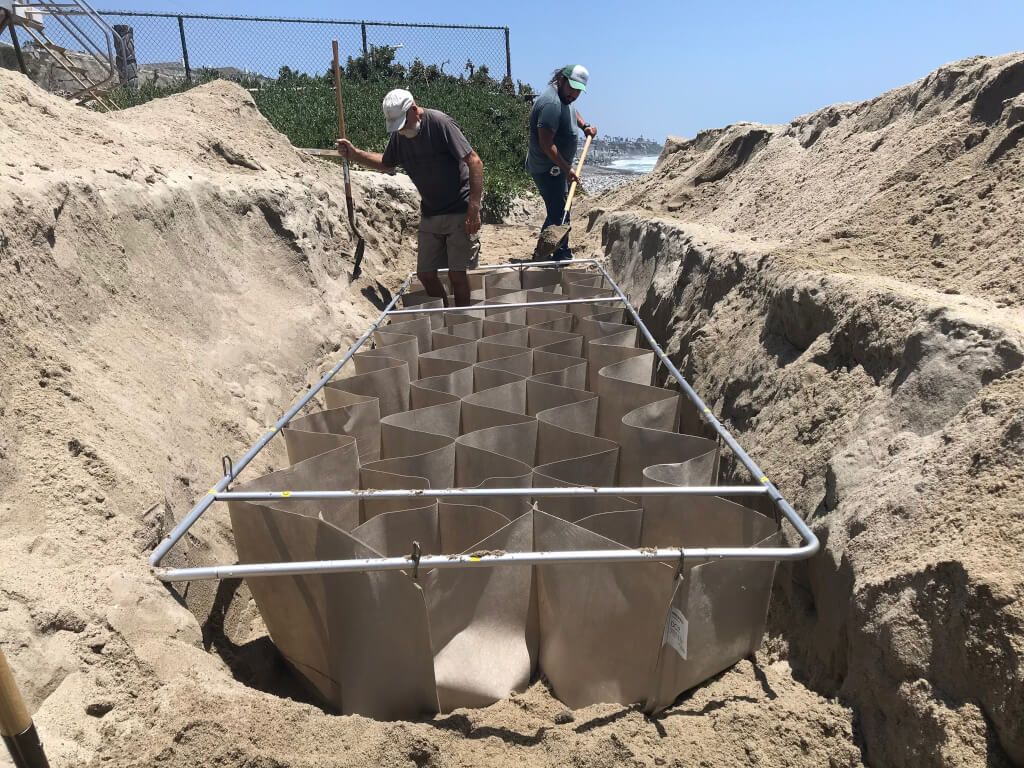
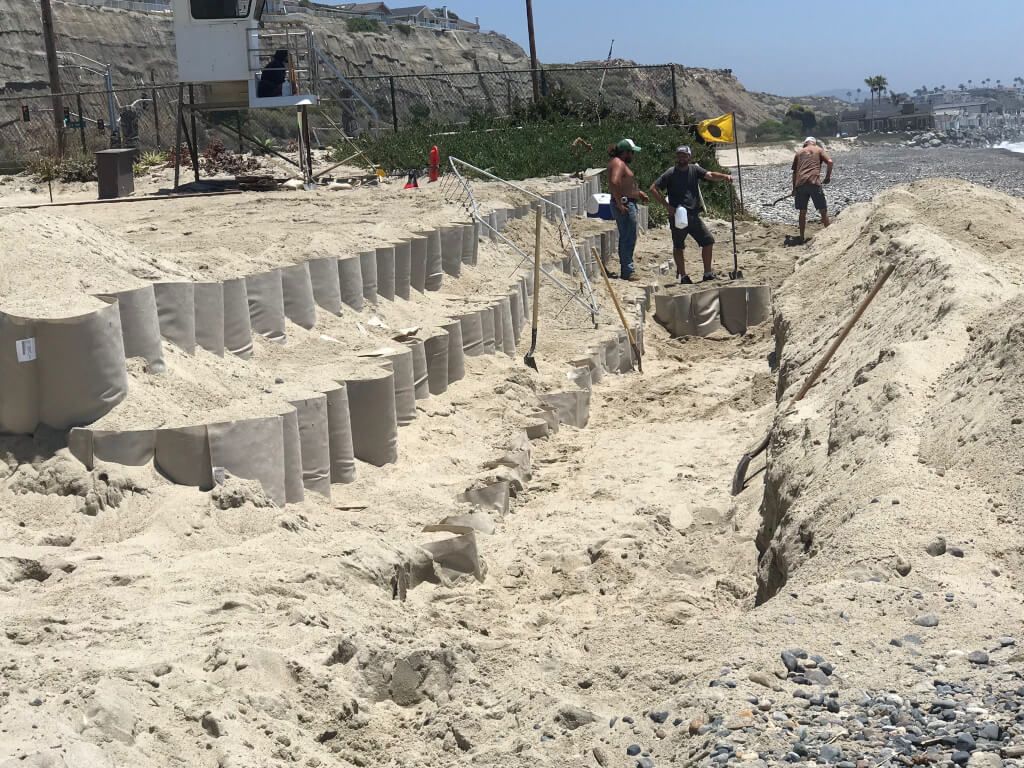
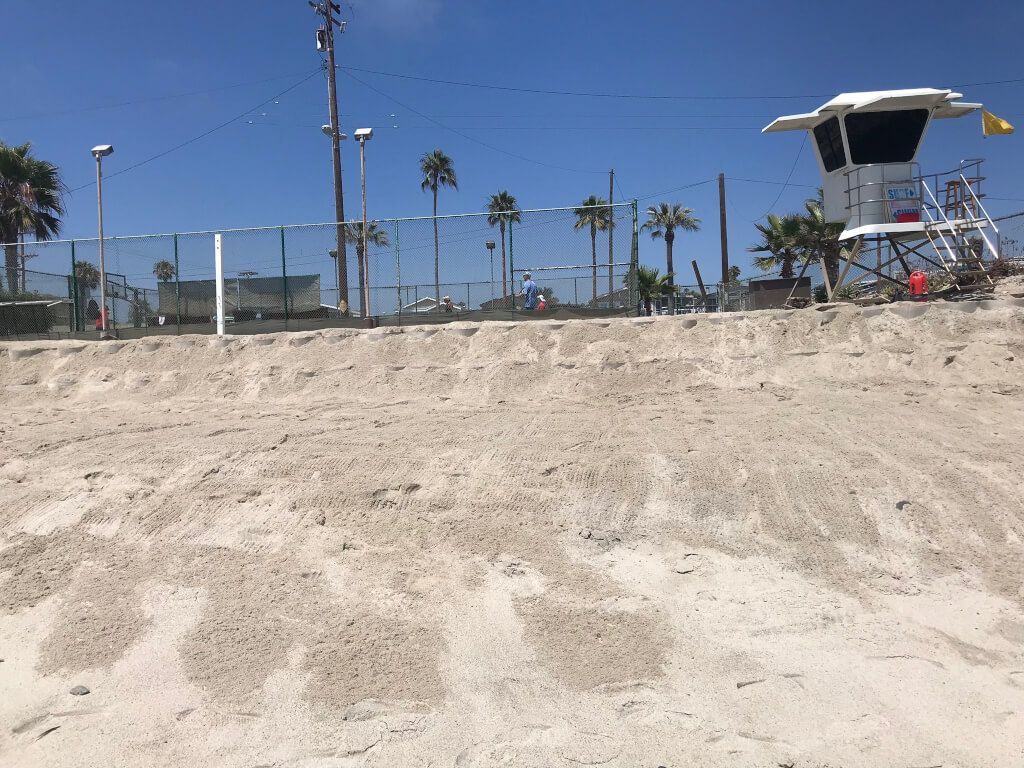
The post Flood Defense Group sends over a mile of flood barriers to combat flooding on Lake Michigan appeared first on Flood Defense Group.
